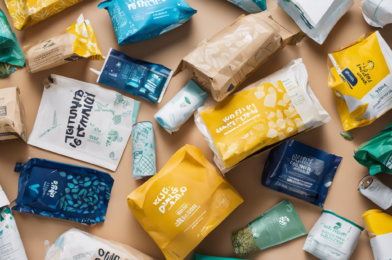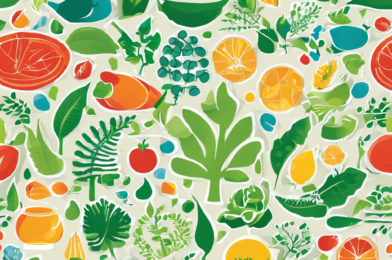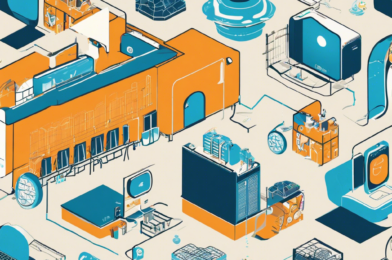The fashion industry is undergoing a sustainable revolution, and it’s about time! With an ever-growing awareness of the environmental and social impact of the clothing we wear, consumers are demanding more from their favorite brands. This shift in consciousness has led to a focus on eco-friendly and ethical practices, from the materials used to create our garments to the working conditions of those who make them. One of the key aspects of this revolution is the rise of sustainable fabrics. Organic cotton, for example, is grown without the use of harmful pesticides and fertilizers, reducing the environmental impact and creating a safer work environment for farmers. Similarly, recycled fabrics, such as those made from recycled plastic bottles, are becoming increasingly popular. By giving new life to discarded materials, these fabrics reduce waste and lessen the need for resource-intensive virgin fibers.
Numerous innovative and sustainable materials are also being utilized. One example is Tencel, a soft and breathable fabric produced from wood pulp in a closed-loop process that recycles water and solvents, minimizing environmental impact. Additionally, Piñatex, a natural textile made from pineapple leaves, offers a vegan alternative to leather, reducing the cruelty and chemical usage associated with the tanning process. It is an excellent option for those seeking cruelty-free fashion. With consumers becoming increasingly conscious, ethical brands are also in the spotlight. These companies are committed to transparency and ensuring that every step of their production process is ethical and sustainable. From fair wages and safe working conditions for employees to minimal waste and eco-friendly packaging, these brands are leading the way towards a more responsible future.
One such brand at the forefront is Patagonia, which has long been synonymous with sustainability. They use recycled materials, and their ‘Common Threads’ recycling program encourages consumers to return worn-out garments to be recycled, ensuring a full product lifecycle. Additionally, their ‘1% for the Planet’ initiative sees them donate 1% of annual sales to environmental causes. Another exemplary brand is Veja, a French footwear and accessories brand known for its transparency and fair trade practices. Veja works directly with small farmers’ cooperatives in Brazil, ensuring fair pay and ethical working conditions while also using eco-friendly materials such as organic cotton and wild rubber.
With a growing number of conscious consumers, these brands are seeing success and setting a precedent for the industry. The future of fashion is undoubtedly sustainable, and it’s encouraging to see big names and newcomers alike embracing this change. Consumers are now more empowered than ever to make informed choices and support brands that align with their values. This movement is a win-win for people, the planet, and stylish, sustainable wardrobes. It is essential to note that this revolution is not just a trend but a necessary shift toward a more responsible and ethical future. By embracing sustainable practices, the fashion industry can continue to thrive, ensuring that the clothes we love are produced and consumed in a way that benefits everyone.
Consumers are increasingly demanding more eco-friendly and ethical options, and brands are listening. Major retailers and independent designers are responding to this call for change by creating clothing with lower environmental impacts and higher social responsibility standards. This shift signifies a more thoughtful and conscious era in the fashion industry. Sustainable fashion is not just about the materials used but also the entire supply chain. Ethical brands are those that ensure fair wages, safe and healthy working conditions, and a reduced environmental footprint throughout the entire process, from design to delivery. This includes minimizing waste, using recycled packaging, and optimizing transportation routes to lower carbon emissions.
Some notable mentions in this space include The Standard Stitch, a Los Angeles-based brand that prioritizes eco-friendly, plant-based fabrics and local manufacturing to reduce their carbon footprint. Similarly, Boyish Jeans, a woman-owned brand, crafts stylish, vintage-inspired denim with sustainable and cruelty-free practices. Then there’s Vaude, an outdoor clothing and gear company that embraces the whole package, with repair services, takeback programs, and even second-hand sales to extend the life of their products. These brands showcase that sustainability and style can go hand in hand. They also prove that being environmentally and socially responsible is good for business, attracting conscious consumers who want to look good and do good.
As consumers, we have the power to drive this change and create a more sustainable future. Being mindful of our purchasing decisions, supporting ethical brands, and embracing second-hand clothing can significantly impact the industry. Educating ourselves about sustainable practices and materials empowers us to make informed choices and hold brands accountable for their actions. Additionally, spreading awareness and encouraging others to join the sustainable fashion movement can create a collective force for change. Together, we can shape an industry that values people, the planet, and profit in equal measure. Let’s embrace the revolution and create a fashionable future that we can all feel good about.
In conclusion, the fashion industry’s sustainable revolution is well underway, and it is here to stay. With consumers leading the charge, brands are stepping up to meet the demand for eco-friendly and ethical practices. Whether through innovative sustainable materials, transparent supply chains, or circular business models, the future of fashion is responsible and conscious. As we continue to support and celebrate these changes, we can all play a part in creating a stylish and sustainable world. So, let’s keep embracing those eco-friendly fabrics, championing ethical brands, and, most importantly, continuing to educate ourselves and others on this journey towards a greener wardrobe.









